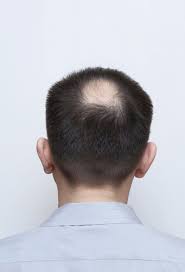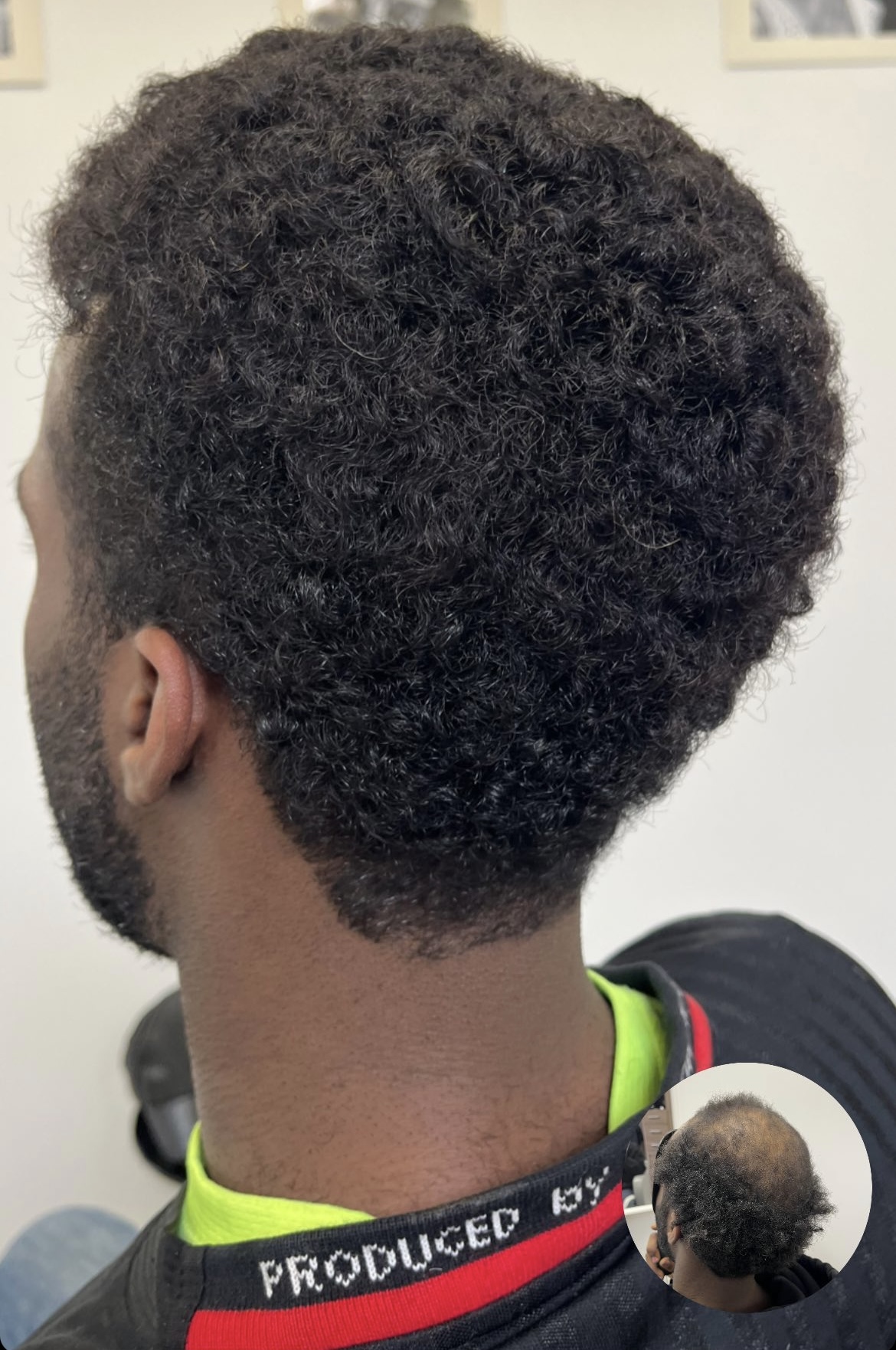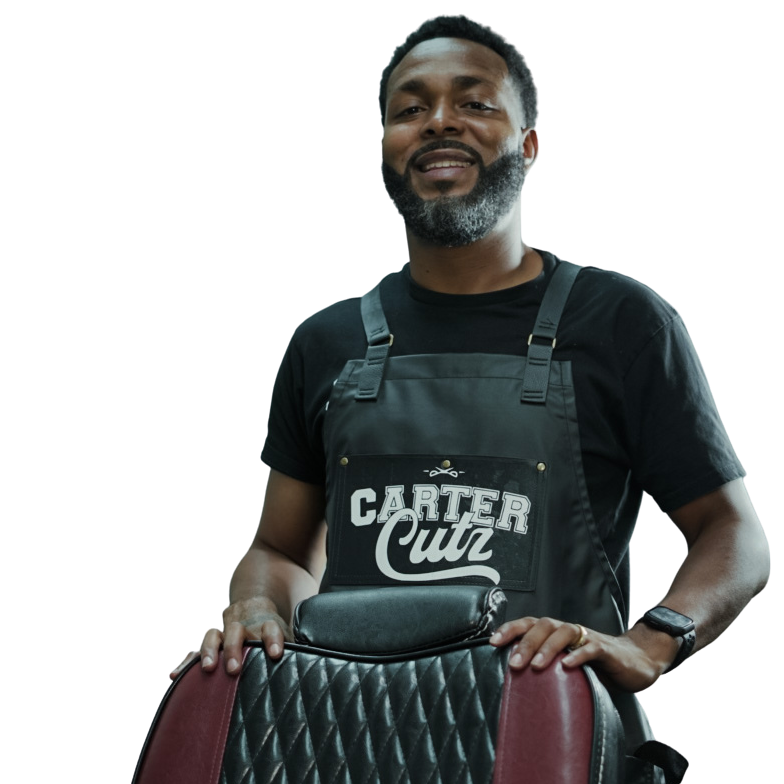THE STRUGGLES OF HAIR LOSS BEFORE 30
Introduction
Navigating the world of early hair loss? For those under 30 noticing unexpected thinning patches, it’s essential to recognize that this journey is more common than many might think. The onset of hair loss at such a young age isn’t merely an aesthetic concern; it touches the very core of identity, self-confidence, and personal narrative.
However, there’s a silver lining. Understanding the causes and solutions is within reach. In this digital age, a wealth of knowledge awaits exploration, offering insights into the science and emotions surrounding early hair loss.
As this topic unfolds, it’s crucial to remember that while hair loss might be an unexpected chapter in life, the power to take informed and proactive steps is available to everyone. Together, the causes, emotions, and most importantly, the choices available to navigate this journey will be explored.
Stay informed, stay hopeful, and know that every strand has a story, and the narrative is still unfolding.
The Deep-Rooted Impact of Early Hair Loss: More Than Just Strands
If you’ve landed on this page, chances are you’re seeking understanding, maybe even solace, in the face of early hair loss. It’s a topic that’s close to many hearts, and it’s about so much more than just hair. Let’s dive into why this matters so deeply.
The Emotional Rollercoaster
Hair loss, especially when it strikes early, isn’t just a physical change. It’s an emotional journey. For many, hair isn’t just about style or fashion; it’s a part of who they are. When those locks start thinning or receding, it can feel like a piece of one’s identity is slipping away. The mirror reflects a change, and with it comes a whirlwind of emotions – from surprise to sadness, from denial to acceptance. It’s a silent struggle, one that many face but few talk about.
Hair: A Pillar of Identity and Confidence
Think back to those childhood days, playing with hair, experimenting with styles, or simply letting it flow freely. Hair has always been a canvas, a way to express oneself. It’s deeply intertwined with personal identity. For some, it’s a crown, for others, a shield. It’s a statement to the world and a reflection of inner self.
Losing hair can sometimes feel like losing a part of that identity. It can shake the very foundation of self-confidence. Social interactions, professional encounters, even simple daily tasks can become daunting. But here’s the thing: while hair plays a significant role in self-perception, it’s essential to remember that true identity and worth go far beyond the surface.
Finding Strength in Understanding
Knowledge is empowering. By understanding the emotional and psychological effects of early hair loss, there’s an opportunity to address them head-on. It’s about finding support, seeking solutions, and most importantly, embracing the journey. Remember, hair loss might be a chapter, but it’s not the entire story.
To everyone out there facing this challenge: You’re not alone. There’s a vast community ready to support, share, and uplift. And while the journey might have its ups and downs, there’s always a way forward. Stay informed, stay connected, and always remember – you’re so much more than your hair.
Unraveling the Causes of Hair Loss Before 30

Diving deeper into the world of early hair loss, it’s essential to understand the ‘why’ behind it. What triggers this unexpected change? Let’s explore some of the primary culprits.
Is Genetics the Main Culprit?
For many, the roots of hair loss can be traced back to family trees. If mom or dad experienced early hair thinning, there’s a chance those genes got passed down. Genetics can predetermine the sensitivity of hair follicles to certain hormones, leading to hair thinning or even baldness. It’s nature’s way, and while we can’t change our genes, understanding them can offer valuable insights.
The Role of Hormonal Imbalances
Hormones are the body’s messengers, and when they’re out of balance, they can send some confusing signals. Conditions like Polycystic Ovary Syndrome (PCOS) or thyroid imbalances can lead to hair loss. Hormones play a pivotal role in hair growth cycles, and any disruption can lead to noticeable changes.
Lifestyle's Silent Impact
In today’s fast-paced world, stress is almost a constant companion for many. Add to that diets that might not always be nutrient-rich, and the impact on hair health can be significant. Stress can disrupt hair growth cycles, and certain dietary deficiencies can weaken hair strands, making them more prone to breakage.
Action Steps for Section #1:
Genetic Testing: Consider undergoing genetic tests designed to determine hair loss predisposition. These tests can provide insights into the likelihood of experiencing hair loss based on genetic factors.
Managing Stress: Incorporate relaxation techniques into daily routines. Whether it’s meditation, deep breathing exercises, or simply taking a walk in nature, find what works best and stick to it.
Dietary Recommendations: Ensure a balanced diet rich in essential vitamins and minerals. Prioritize foods high in biotin, vitamin E, and omega-3 fatty acids. Remember, what goes inside reflects outside.
Navigating the Treatment Landscape for Early Hair Loss
As the journey into understanding early hair loss continues, it’s only natural to seek solutions. The world of hair loss treatments is vast, with options ranging from over-the-counter products to surgical procedures and natural remedies. Let’s delve into some of the most common treatment avenues and weigh their pros and cons.
Over-the-Counter Hair Growth Products: Miracle or Myth?
The market is flooded with products claiming to reverse hair loss and promote growth. But do they deliver on their promises? Some over-the-counter products have shown promise and are backed by scientific research. However, results can vary based on individual factors, and it’s essential to approach them with realistic expectations.
The Surgical Route: Hair Transplant Surgery
Hair transplant surgery has come a long way, with modern techniques offering natural-looking results. The procedure involves transplanting hair follicles from one part of the scalp to thinning areas. Benefits include long-lasting results and a boost in self-confidence. However, it’s a surgical procedure, which means potential risks and a recovery period so make sure to hire a trusted company like Ace Man Weave Units.
Non-Surgical Hair Replacement: A Closer Look
In the vast realm of hair loss solutions, non-surgical hair replacement systems have carved a niche for themselves, offering both men and women a chance to regain not just their hair, but their confidence too. These systems, which include wigs, hairpieces, and the increasingly popular “man weave,” provide an alternative to more invasive procedures and medications.
The Rise of the Man Weave
While wigs and hairpieces have been around for centuries, the “man weave” is a relatively new entrant in the world of hair replacement. Designed specifically for men, this hair unit is skillfully applied to the scalp using a combination of adhesive and tape. It blends seamlessly with the existing hair, creating a natural look that can be styled, cut, and even dyed to the wearer’s preference. Whether one is looking to cover a receding hairline, bald patches, or simply wants a fuller head of hair, the man weave offers a versatile solution.
Customization at Its Best
One of the standout features of non-surgical hair replacement systems is the level of customization they offer. From the texture to the color, from the length to the style, individuals can choose a system that mirrors their natural hair or even experiment with entirely new looks. Whether it’s a lace front wig, a full cap wig, or a specific hairpiece to cover a thinning crown, the options are vast and varied.
Why Opt for Non-Surgical Hair Replacement?
Immediate Results: Unlike surgical procedures that require recovery time or medications that might take months to show results, non-surgical hair systems offer instant gratification. Once fitted, the transformation is immediate.
Versatility: Fancy a long-haired look for a special occasion? Or perhaps a short, chic style for the summer? With non-surgical systems, changing hairstyles can be as simple as changing a hairpiece.
Safety: There’s no risk of surgical complications, no side effects from medications, and no downtime. It’s a safe and straightforward solution for those wary of more invasive options.
Cost-Effective: In comparison to surgical procedures, non-surgical hair replacement systems are often more affordable, allowing individuals to experiment without committing to a hefty price tag.
In the journey of hair restoration, non-surgical hair replacement systems offer a beacon of hope for many. They bridge the gap between acceptance and action, providing a solution that’s both effective and empowering. Whether it’s a wig, a hairpiece, or the trendy man weave, the goal remains the same: to help individuals look and feel their best, with confidence that shines from the inside out.
Natural Remedies vs. Medical Treatments
Nature offers a plethora of remedies, from essential oils to herbal concoctions, believed to promote hair health. While some swear by these remedies, it’s essential to note that their efficacy might not be as extensively researched as medical treatments. It’s always a good idea to approach natural remedies with an open mind but also with caution.
Action Steps for Section #3:
FDA-Approved Products: Before investing in over-the-counter treatments, check for FDA-approved hair growth products. These have undergone rigorous testing and are deemed safe and effective for use.
Finding the Right Specialist: If considering hair replacement, the ACE platform is a valuable resource. Ensure to research and connect with reputable hair replacement specialists on the platform for expert guidance and solutions.
In the quest to combat early hair loss, the treatment landscape offers a plethora of options. The key is to stay informed, weigh the pros and cons, and choose a path that aligns with individual needs and preferences. Remember, every strand has its journey, and there’s always a way forward.
Proactive Steps: Preventing Hair Loss Before It Begins
While understanding the causes and treatments for early hair loss is crucial, prevention often holds the key. After all, it’s always better to be proactive than reactive. So, what can be done to reduce the risk of hair loss and ensure those locks remain luscious and strong? Let’s explore.
Reducing the Risk: It's More Than Just Genetics
While genetics play a significant role in hair loss, several factors are within control. Factors like managing stress, avoiding excessive heat treatments, and being gentle while brushing can make a difference. It’s about making small, consistent choices that benefit hair health in the long run.
Strengthening Hair from the Outside
A proper hair care routine can work wonders. Using the right products, avoiding harsh chemicals, and even simple practices like not tying hair too tightly can prevent breakage and thinning. Remember, hair is delicate, and treating it with care can prolong its health and vitality.
Nutrition: The Inside Story
What’s consumed directly impacts hair health. Hair is made of protein, and ensuring a protein-rich diet can promote hair strength. Additionally, certain vitamins and minerals play a pivotal role in maintaining hair’s luster and preventing hair loss.
Action Steps for Section #4:
Daily Hair Care Routine:
Use a gentle, sulfate-free shampoo and conditioner.
Avoid excessive heat styling; let hair air dry when possible.
Use a wide-toothed comb to detangle wet hair gently.
Opt for loose hairstyles to prevent tension on the scalp.
Vital Nutrients for Hair Growth:
Protein: Found in lean meats, fish, eggs, and legumes.
Biotin: Present in eggs, almonds, and spinach.
Vitamin E: Abundant in avocados, sunflower seeds, and almonds.
Omega-3 Fatty Acids: Found in fatty fish, flaxseeds, and walnuts.
Iron: Present in red meat, lentils, and spinach.
Zinc: Found in beef, pumpkin seeds, and lentils.
In the journey of hair health, prevention is a powerful ally. By adopting the right habits and nourishing the body from within, the risk of early hair loss can be significantly reduced. Stay informed, make conscious choices, and remember, every strand is a testament to the care it receives.
Beyond the Strands: Embracing and Thriving
Hair loss, especially when it strikes early, is more than just a physical phenomenon. It’s an emotional journey, one that can be laden with self-doubt, anxiety, and a myriad of feelings. But here’s the thing: while hair might be a part of the story, it isn’t the entirety of it. This section delves into coping, acceptance, and finding strength in vulnerability.
Navigating the Emotional Waves
The emotional impact of hair loss can be profound. It’s natural to grieve the loss, to feel a sense of longing for what once was. But it’s also essential to remember that self-worth isn’t tied to hair. Seeking professional counseling or therapy can provide valuable tools to navigate these emotions and find a renewed sense of self.
Finding Strength in Numbers
There’s comfort in knowing one isn’t alone. Numerous support groups and communities cater specifically to individuals experiencing early hair loss. These groups offer a safe space to share experiences, seek advice, and find solace in shared journeys.
The Bold Move: Embracing Baldness
For some, hair loss becomes an opportunity to redefine personal style. Going bald can be empowering, a bold statement of embracing change and wearing it with confidence. Plus, it comes with its perks – think of the time saved on hair care and the unique style statement it makes!
Action Steps for Section #5:
Boosting Self-Confidence:
Focus on strengths and accomplishments that aren’t related to appearance.
Experiment with new looks, be it scarves, hats, or even bold makeup.
Surround oneself with positive and supportive individuals who uplift and validate feelings.
Finding Support Groups:
Check local community centers or therapy clinics for support group listings.
Explore online platforms and forums dedicated to hair loss, especially those tailored for the under 30s demographic.
Engage in group activities or workshops that focus on self-esteem and body positivity.
In the narrative of hair loss, there’s a chapter of resilience, acceptance, and growth. It’s about finding beauty in every stage, embracing change, and knowing that the essence of an individual goes far beyond the surface. Stay empowered, stay connected, and remember, every journey is unique, and every story is worth celebrating.
Blog Conclusion: Charting the Path Forward
Navigating the world of early hair loss is undeniably a journey filled with its own set of challenges and emotions. But as we’ve explored throughout this series, it’s also a journey of empowerment, understanding, and growth.
Understanding the intricacies of hair loss before 30 is paramount. It’s not just about the physical changes but the emotional and psychological implications that come with it. By addressing these early on, there’s an opportunity to take proactive steps, whether it’s seeking treatments, adopting preventative measures, or simply finding solace in shared experiences.
For those seeking guidance, professional advice is invaluable. Whether it’s understanding the root cause, exploring treatment options, or seeking emotional support, professionals bring a wealth of knowledge and empathy. And for those considering non-surgical solutions, our platform boasts a curated list of hair system specialists ready to assist and guide.
But here’s the most crucial takeaway: Every individual’s journey with hair loss is unique. It’s a personal narrative filled with ups and downs, challenges and triumphs. Embrace it. Own it. And remember, it’s just one chapter in the vast book of life.
Call to Action: Your experiences, insights, and tips can be a beacon of hope and guidance for many. Share your journey in the comments section below. Let’s create a community of support, understanding, and empowerment.




